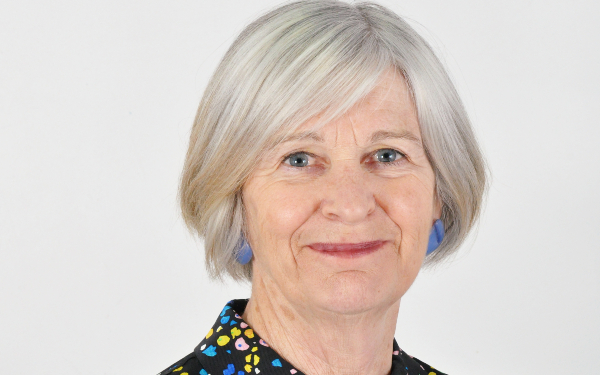
There has been a 25% fall in the number of child death or serious harm cases involving suspected abuse or neglect or related to looked-after children reported by English councils annually, Department for Education figures show.
Authorities made 338 serious incident notifications, down from 405 in 2023-24 and 456 in 2022-23, meaning the number has fallen by 25% over the past two years.
The 2024-25 figure is the lowest recorded since the DfE started collecting the data in 2019 and compares to a high of 536 in 2020-21, which Ofsted attributed to increases in harm to infants during Covid lockdowns.
Serious incident notification requirements
Under section 16C of the Children Act 2004, a council must notify the Child Safeguarding Practice Review Panel if a child it knows or suspects has been abused or neglected dies or is seriously harmed in its area, or where such a child who is normally resident in its area dies or is seriously harmed outside England. The notifications should be sent within five working days of the local authority becoming aware of the incident.
Councils must also notify the DfE and Ofsted of the death of a looked after child, regardless of whether there is suspected abuse or neglect.
Safeguarding partners (councils, NHS commissioners and the police) must carry out a rapid review of all notifiable incidents, to identify the facts, any immediate safeguarding actions needed and potential learning, and submit this to the panel.
The DfE said it was not clear whether the fall in notification numbers represented a decrease in the level of harm or whether councils reported fewer notifiable incidents than in previous years. It added that it was “aware that, in some instances, not all incidents that meet the definition for a serious incident are notified”.
As in previous years, the vast majority of notifications (329) were for child deaths or serious harm, with the remainder (9) – categorised as ‘other’ – mainly relating to child perpetrators who were themselves known or suspected to have been abused or neglected.
Sharp fall in reports involving infants, older teenagers and boys
Two-thirds of the fall in the number of notifications in 2024-25 was down to a reduction, from 205 to 162, in the number of child deaths reported by councils. However, over the past two years, the number of serious harm cases has fallen more sharply (by 32%) than the number of child deaths (19%).
Children aged under one remained the biggest single group by age, accounting for 102 (30%) of the 338 cases in 2024-25. However, their number has fallen considerably over the past two years, from 161 in 2022-23.
There was also a significant drop in the past year in the number of cases involving children aged 16+, which dropped from 94 to 69, meaning there were fewer such cases than there were involving 11-15 year-olds in 2024-25 (78).
There were falls in the number of serious incident notifications involving males and females, but the drop was significantly steeper among boys, for whom there were 175 reports in 2024-25, down from 216 in 2023-24 and 251 in 2022-23.
Just under one in three cases involved children from an ethnic minority (31%) in 2024-25, in line in with their representation among children in need, though below that in the general population (27%). Despite their over-representation, this marked a fall in the proportion of notifications they accounted for in 2023-24 (36%), mainly due to the number of cases involving children of mixed ethnicity almost halving, from 56 in 2023-24 to 29 in 2024-25.
One in five cases in 2024-25 involved disabled children.
Cases involving children known to social care
A similar number of cases involved looked-after children in 2024-25 (93) as 2023-24 (99), with 30 of these – compared with 35 in 2023-24 – involving the death of the child without suspected abuse or neglect.
The number of cases involving children on child protection plans was also stable year on year, with 38 cases in 2024-25, compared with 37 in 2023-24.
However, there was a sharp drop, from 64 to 34, in the number of cases involving children on a child in need plan, meaning they accounted for 10% of cases in 2024-25, down from 16% in 2023-24.
‘We have responsibility to learn from incidents to better protect children’
In response to the figures, Child Safeguarding Practice Review Panel chair Annie Hudson said: “No child should suffer abuse or neglect, and the data published today demonstrates how important it is that local and national agencies do more to protect children from harm.

Annie Hudson, chair, Child Safeguarding Practice Review Panel
“Behind these statistics lies the distressing realities of very many children experiencing harm inside and outside their home, and which has resulted in either their tragic death or very serious harm. Every child’s story and experience is unique, and we all have a responsibility to learn from what happened to them and take any necessary action to improve how agencies work together to help and protect children.”
For the Association of Directors of Children’s Services, president Rachael Wardell said: “Local authorities’ children’s services play a crucial role as the first line of defence in identifying and responding to risk, but they cannot do it alone. A coordinated, multi-agency approach where education, including early years settings, health, police, and social care partners work together seamlessly is essential to ensure that no child slips through the net.
“Strengthening these partnerships is key to building a more responsive, preventative system that protects all children, especially the most vulnerable.”






 Bournemouth, Christchurch and Poole
Bournemouth, Christchurch and Poole  Hampshire County Council
Hampshire County Council  Oxfordshire County Council
Oxfordshire County Council  South Gloucestershire Council
South Gloucestershire Council  Wokingham Borough Council
Wokingham Borough Council  Providing a lifeline for social workers who want to get back into the sector
Providing a lifeline for social workers who want to get back into the sector  The highs and lows of a children’s services’ transformation journey
The highs and lows of a children’s services’ transformation journey  Embedding learning in social work teams through a multi-agency approach
Embedding learning in social work teams through a multi-agency approach  The family safeguarding approach: 5 years on
The family safeguarding approach: 5 years on  Harnessing social work values to shape your career pathway
Harnessing social work values to shape your career pathway  Workforce Insights – showcasing a selection of the sector’s top recruiters
Workforce Insights – showcasing a selection of the sector’s top recruiters  Join our team to help technology enabled care transform lives in Nottinghamshire
Join our team to help technology enabled care transform lives in Nottinghamshire 

 Facebook
Facebook X
X LinkedIn
LinkedIn Instagram
Instagram
recently issued FOIA requests suggest that the data isn’t held’ ~ to hold information has a specific and very narrowly constructed legal definition …